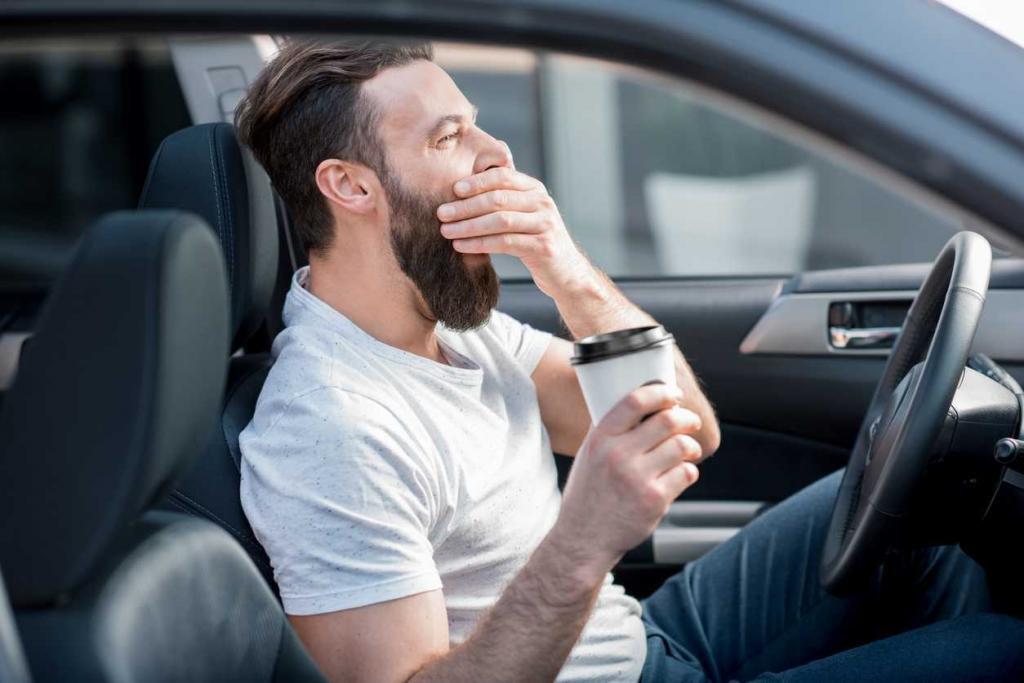
There is no question that Uber has significantly made inner-city transport a lot more convenient. However, one cannot ignore the other side of the coin, especially since it often puts a lot of people in danger.
Car accidents involving Uber often generate a lot of press, mostly thanks to the company’s notoriety. But there is one aspect of being an Uber driver that truly puts everyone at risk, and that, unfortunately, cannot be solved without some input from the state and government: driver drowsiness.
What Is Drowsy Driving?
Drowsy drowning essentially means getting behind the wheel when you’re too tired to reasonably stay safe while driving. The Sleep Foundation reports that around 7 million people admitted to dozing off while behind the wheel, even multiple times in the same week.
Drowsy driving can be caused by a variety of issues:
- Health conditions
- Medications that induce drowsiness
- Insomnia, or not getting enough sleep on occasion
- Exhaustion
What’s Does Uber Have to Do with It?
For those who drive commercially, the issue is even more severe. People who work on buses, trucks, taxis or other types of drivers typically abide by safety regulations that indicated how long a driving shift can be, and when to take a break to properly rest.
However, for Uber drivers, no such rules exist. Uber works on a different business model than taxis. Drivers here are collaborators who are free to work anytime they want and for how long. As a result, some Uber drivers can only be active on the weekends, while others could only accept a ride from time to time. And others can push themselves too much in hopes of making more money.
As a result, some people may essentially exhaust themselves and work for too long, to the point where they can no longer truly be in control of the vehicle. This, of course, puts everyone on the road in danger: passengers, other drivers, and even pedestrians.
Is the Company Doing Something about It?
Uber has announced back in 2018 it was introducing a 12-hour limit on using the app by Uber drivers, and imposing a 6-hour rest period until the app can be used again.
While it’s certainly a move in the right direction, it’s not a foolproof solution. For one thing, Uber drivers could potentially sign up for other ride-sharing services and switch to it once they hit the 12-hour limit. Additionally, there is also the notion that 12 hours may still be too long of a shift, and drivers can still experience drowsiness.
“How Can I Prove an Uber Accident Was Caused by Drowsy Driving?”
Drowsy driving is a common cause of car and truck accidents, resulting in more than 71,000 accidents and 1,550 fatalities per year. But proving that an Uber accident was caused by drowsy driving can be a bit more difficult than you may think. Let’s discuss a few ways drowsy driving can be identified as a contributing factor in a Missouri car accident.
There Isn’t Necessarily a Way To Definitively “Prove” Drowsy Driving
Unfortunately, no test exists to establish that a driver was drowsy during an accident, unlike breathalyzers and drug tests for alcohol and drugs. Research is ongoing on a blood test that may help prove drowsy driving, but this is not yet in use.
Because of this, drowsy driving is usually proven by the circumstances of the crash. Let’s look at these factors and discuss how they may help prove that a driver was drowsy.
Common Factors That May Prove Drowsy Driving Accidents in St. Louis
Many circumstantial factors can combine to prove that an Uber driver was drowsy or asleep at the wheel. Here are just a few of them.
- Driving behavior leading up to the accident – For example, if you have dash camera footage of the driver swerving or acting erratically before the accident, but they did not have drugs or alcohol in their system, this could help prove drowsy driving.
- Time of day – As you’d expect, drowsy driving is more common in the very late night and early morning.
- The driver’s reaction before the accident – If a driver falls asleep, they generally won’t react to an on-road situation at all. For example, skid marks are rarely present when a drowsy driver hits another car or obstacle since they won’t brake before the impact.
- Admission of drowsy or sleepy driving – If the other driver admits to you or tells someone else they were drowsy or sleepy when driving, this can be used against them.
- Driving alone – Most drowsy driving incidents happen to people driving alone for obvious reasons. There’s nobody else to keep them awake or notice that they are sleepy. This is why 82% of drowsy driving accidents happen to solitary drivers.
Proving that another driver, especially an Uber driver, was asleep at the wheel or drowsy may be difficult, but it’s not impossible. And, even if you can’t prove drowsy driving, the other driver can still be found to be at fault if they caused the crash.
What Can You Do?
If you’ve been involved in a car accident with a drowsy Uber driver, you have a right to file a claim and request compensation. Contact a St. Louis Uber accident lawyer as soon as you can to help you file the insurance claim and demand compensation for pain and suffering.
Why Choose Us vs TV Lawyers?
Direct Attorney Access
Maximum Settlement Focus
Trial-Ready Cases
Paralegal Handling
Quick Settlement Push
Settlement-Only Focus
Free Consultation with a St. Louis Car Accident Lawyer
Don’t talk to an insurance claims adjuster before speaking with The Hoffmann Law Firm, L.L.C. We can help you avoid making statements that may affect the outcome of your case. The consultation is free; you don’t pay unless we get you money!
